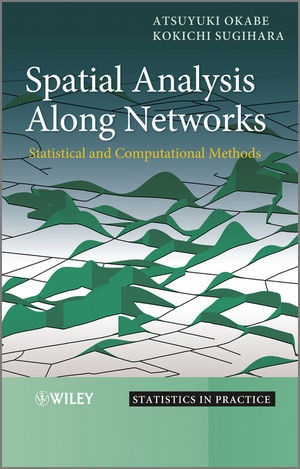Read more
Informationen zum Autor Atsuyuki Okabe , Graduate School of Engineering, University of Tokyo Professor Okabe has been studying statistical spatial analysis for 35 years, and specifically statistical spatial analysis on a network since 1995. One of the leading authorities in the area, he has published over 100 articles, in numerous international journals. He has also authored and edited four previous books. Kokichi Sugihara , Graduate School of Information Science and Technology, University of Tokyo Professor Sugihara has co-authored the book on Voronoi diagrams with A. Okabe. He is also an experienced author and lecturer. Klappentext In the real world, there are numerous and various events that occur on and alongside networks, including the occurrence of traffic accidents on highways, the location of stores alongside roads, the incidence of crime on streets and the contamination along rivers. In order to carry out analyses of those events, the researcher needs to be familiar with a range of specific techniques. Spatial Analysis Along Networks provides a practical guide to the necessary statistical techniques and their computational implementation.Each chapter illustrates a specific technique, from Stochastic Point Processes on a Network and Network Voronoi Diagrams, to Network K-function and Point Density Estimation Methods, and the Network Huff Model. The authors also discuss and illustrate the undertaking of the statistical tests described in a Geographical Information System (GIS) environment as well as demonstrating the user-friendly free software package SANET.Spatial Analysis Along Networks:* Presents a much-needed practical guide to statistical spatial analysis of events on and alongside a network, in a logical, user-friendly order.* Introduces the preliminary methods involved, before detailing the advanced, computational methods, enabling the readers a complete understanding of the advanced topics.* Dedicates a separate chapter to each of the major techniques involved.* Demonstrates the practicalities of undertaking the tests described in the book, using a GIS.* Is supported by a supplementary website, providing readers with a link to the free software package SANET, so they can execute the statistical methods described in the book.Students and researchers studying spatial statistics, spatial analysis, geography, GIS, OR, traffic accident analysis, criminology, retail marketing, facility management and ecology will benefit from this book. "Students and researchers studying spatial statistics, spatial analysis, geography, GIS, OR, traffic accident analysis, criminology, retail marketing, facility management and ecology will benefit from this book." ( Zentralblatt MATH , 1 May 2013) Zusammenfassung * Presents a much-needed practical guide to statistical spatial analysis on a network, in a logical, user-friendly order. * Introduces the preliminary methods involved, before detailing the advanced, computational methods, enabling the readers a complete understanding of the advanced topics. Inhaltsverzeichnis Preface Acknowledgements Chapter 1 Introduction 1.1 What is network spatial analysis? 1.1.1 Network events: events on and alongside networks 1.1.2 Planar spatial analysis and its limitations 1.1.3 Network spatial analysis and its salient features 1.2 Review of studies of network events 1.2.1 Snow's study on cholera around Broad Street 1.2.2 Traffic accidents 1.2.3 Road-kills 1.2.4 Street crimes 1.2.5 Events on river networks and coastlines 1.2.6 Other events on networks 1.2.7 Events alongside networks 1.3 Outline of the book 1.3.1 Structure of chapters 1.3.2 Questions solved by network spatial methods 1.3.3 How to study this book Chapter 2 Modeling event...

